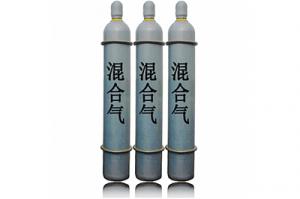Which gases can be decomposed by sulfur hexafluoride at dawn
Published on:2018-09-24 Click:437
Liming sulfur hexafluoride has extremely stable chemical properties, its decomposition temperature is above 500 ℃, and there are few decomposition products under normal operation. However, under the action of electric arc, spark and corona discharge, the gas will decompose and produce some low fluoride compounds, which will further react with electrode materials, insulation materials, water and oxygen to generate very complex compounds.
Moisture has a great impact on sulfur hexafluoride and equipment in Liming. The amount of moisture in the gas is directly related to the level of gas insulation strength and the safe operation of equipment. In the equipment, the micro water content in the gas shall be strictly controlled. Only when the micro water content in the gas is controlled within the range specified in the national standard, can the influence of water on the gas and equipment be reduced to * * * low, and the stability of the insulation strength of the gas and the safe operation of the equipment be guaranteed.
Dawn sulfur hexafluoride does not decompose under 500 ℃ chemically, but will decompose when it exceeds 700 ℃; In addition, it will also decompose under the action of electric arc. Sulfur hexafluoride decomposition gases include SF4, SOF2, SO2F2, etc. They are all active substances and generate hydrofluoric acid (HF) with the water left in electrical equipment. HF not only corrodes metal components, but also corrodes insulating materials, causing insulation damage.
In addition, the insulating materials for sulfur hexafluoride gas electrical equipment are generally epoxy resin, unsaturated polyester, polytetrafluoroethylene plastic and winding polyester insulating parts. The corrosion of glass fiber reinforced resin matrix composites includes both physical corrosion and chemical corrosion: due to the adsorption of resin and sulfur hexafluoride, medium molecules enter the resin matrix through penetration and diffusion, causing the resin to expand; Dielectric penetration leads to partial discharge, which leads to insulation damage.
The content of the article comes from Liming sulfur hexafluoride: http://www.feiliergas.com





